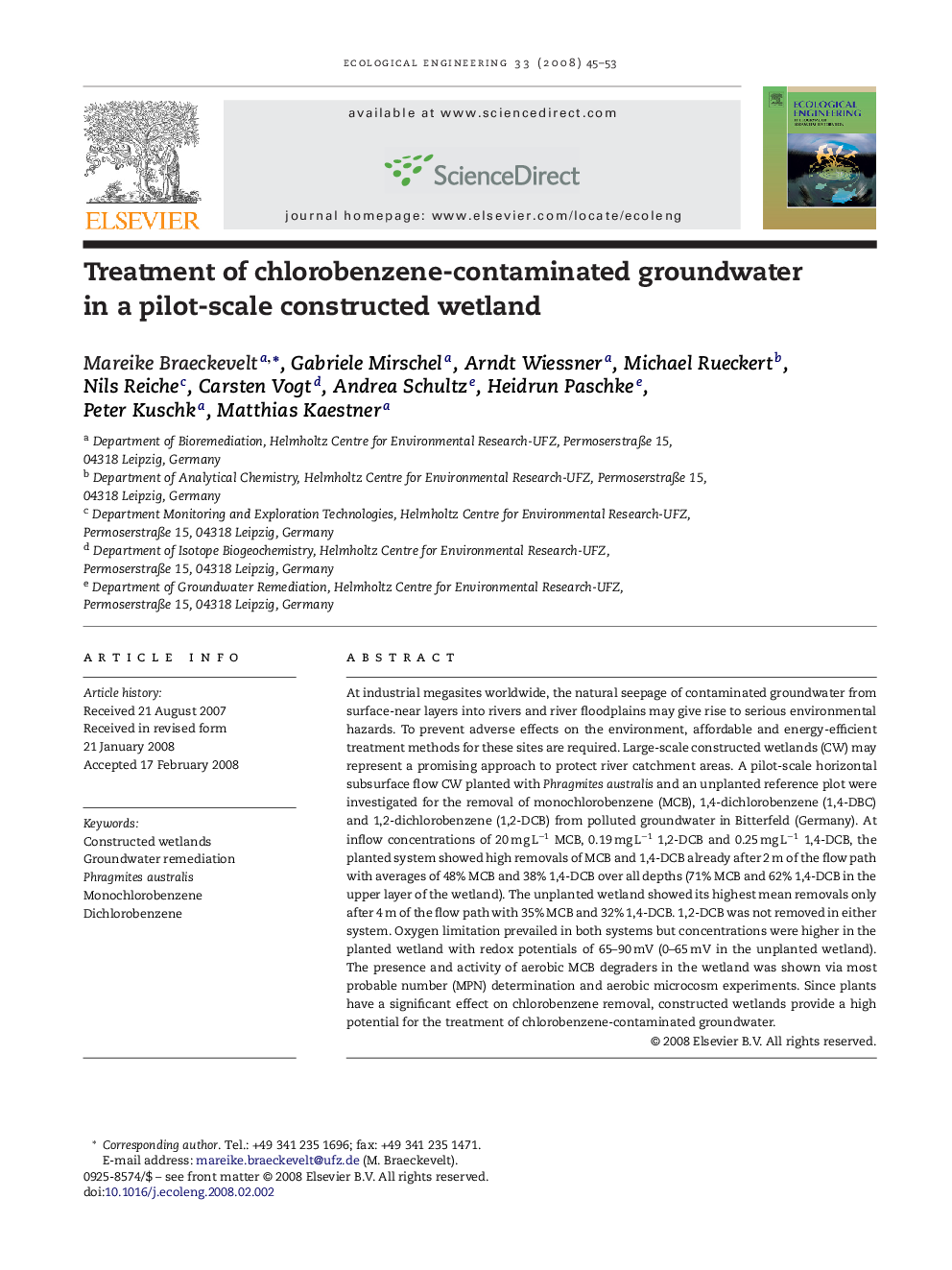| Article ID | Journal | Published Year | Pages | File Type |
|---|---|---|---|---|
| 4390872 | Ecological Engineering | 2008 | 9 Pages |
Abstract
At industrial megasites worldwide, the natural seepage of contaminated groundwater from surface-near layers into rivers and river floodplains may give rise to serious environmental hazards. To prevent adverse effects on the environment, affordable and energy-efficient treatment methods for these sites are required. Large-scale constructed wetlands (CW) may represent a promising approach to protect river catchment areas. A pilot-scale horizontal subsurface flow CW planted with Phragmites australis and an unplanted reference plot were investigated for the removal of monochlorobenzene (MCB), 1,4-dichlorobenzene (1,4-DBC) and 1,2-dichlorobenzene (1,2-DCB) from polluted groundwater in Bitterfeld (Germany). At inflow concentrations of 20 mg Lâ1 MCB, 0.19 mg Lâ1 1,2-DCB and 0.25 mg Lâ1 1,4-DCB, the planted system showed high removals of MCB and 1,4-DCB already after 2 m of the flow path with averages of 48% MCB and 38% 1,4-DCB over all depths (71% MCB and 62% 1,4-DCB in the upper layer of the wetland). The unplanted wetland showed its highest mean removals only after 4 m of the flow path with 35% MCB and 32% 1,4-DCB. 1,2-DCB was not removed in either system. Oxygen limitation prevailed in both systems but concentrations were higher in the planted wetland with redox potentials of 65-90 mV (0-65 mV in the unplanted wetland). The presence and activity of aerobic MCB degraders in the wetland was shown via most probable number (MPN) determination and aerobic microcosm experiments. Since plants have a significant effect on chlorobenzene removal, constructed wetlands provide a high potential for the treatment of chlorobenzene-contaminated groundwater.
Keywords
Related Topics
Life Sciences
Agricultural and Biological Sciences
Ecology, Evolution, Behavior and Systematics
Authors
Mareike Braeckevelt, Gabriele Mirschel, Arndt Wiessner, Michael Rueckert, Nils Reiche, Carsten Vogt, Andrea Schultz, Heidrun Paschke, Peter Kuschk, Matthias Kaestner,
